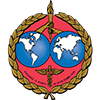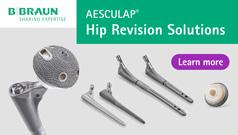SICOT Global Network for Electronic Learning - SIGNEL
Article of the Month: SICOT-J
Treatment of unstable distal radius fractures: non-invasive dynamic external fixator versus volar locking plate – functional and radiological outcome in a prospective case-controlled series
Ali S. Bajwa1,2, Manju Rammappa3, Ling Lee2 and Rajesh Nanda4
1 Villar Bajwa Practice (London and Cambridge), 30 Devonshire Street, London W1G 6PU, UK
2 James Cook University Hospital, Marton Road, Middlesbrough TS43BW, UK
3 University Hospital of North Durham, North Road, Durham DH15TW, UK
4 University Hospital of North Tees, Hardwick Road, TS198PE Stockton-on-Tees, UK
Introduction: Distal radius fracture (DRF) is a common injury and various treatment modalities including open reduction and internal fixation (ORIF) with volar locking plate are available. More recently, a non-invasive external fixator has been used.
Aims: To prospectively compare the use of a non-invasive external fixator with early dynamisation for DRF against ORIF with volar locking plate control group.
Methods: Consecutive patients with closed DRF were included in a prospective case-controlled study. Patients were assigned to non-invasive external fixator or ORIF. Minimum follow-up was two years. Follow-up was at weeks 2, 4, 6, 8, 12, 26 and at one and two-year post-operatively. The outcome measures included demographic details, injury mechanism, AO fracture type, risk factors, body mass index (BMI), ulnar styloid fracture and dorsal comminution, radiographs, grip strength and DASH score.
Results: Consecutive 50 patients were treated either with non-invasive external fixator (25/50) or with ORIF (25/50) and the mean age of the two groups was 53 years (SD 17.1) and 49 years (SD 19.5), respectively. Demographics were matched in two groups. In the non-invasive external fixator group, there were 10 AO Type-A, 5 Type-B and 10 Type-C fractures. The ORIF group included 8 Type-A, 6 Type-B and 11 Type-C fractures. The mean DASH score at three-months and one-year post-injury in non-invasive fixator group was 12.2 (SD 3.1) and 3.5 (SD 0.7), respectively, significantly greater than those of ORIF group 14.5 (SD 5.6) and 11.2 (SD 4.4), respectively (p < 0.05).
Conclusion: DRF treated with non-invasive external fixator can give functional results superior to ORIF at three months and the trend is maintained at one and two-year post-operatively.
Key words: Distal radius fracture / Volar locking plate / External fixture / Functional result / Non-invasive fixator
SICOT J 2015, 1, 34 - http://dx.doi.org/10.1051/sicotj/2015033


















